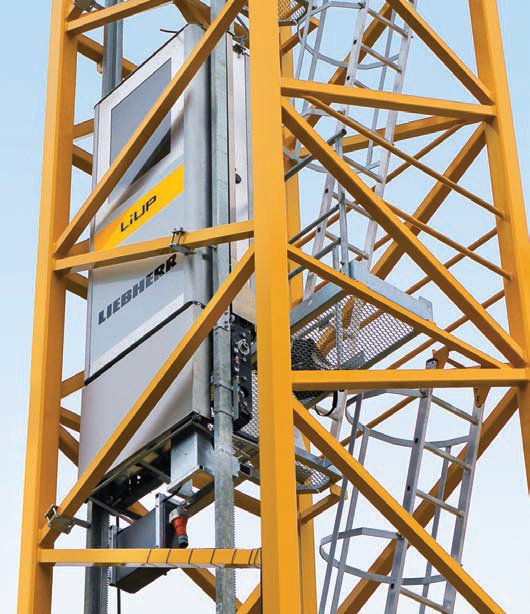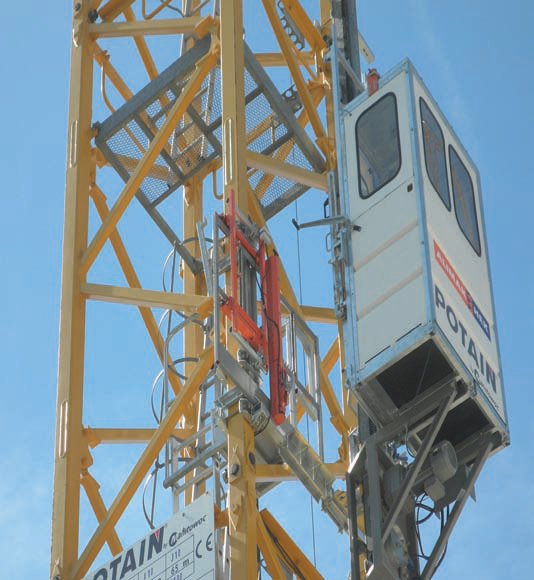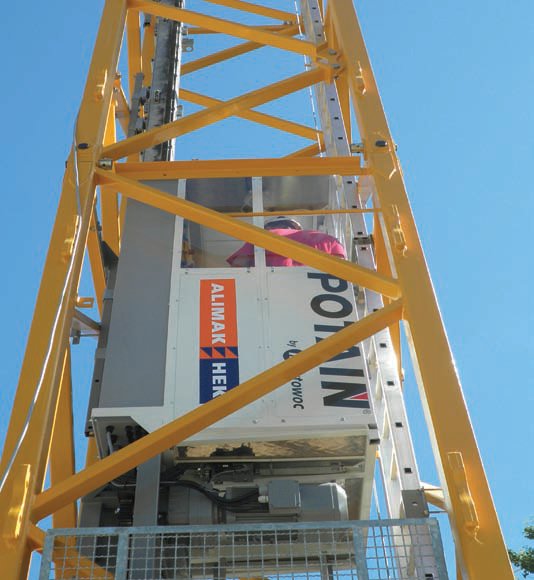Elevated status
27 July 2015There was a noticeable presence at this year’s Intermat of manufacturers promoting operator lifts for tower cranes, due to recent legislation in France demanding the systems at certain heights. Daniel Searle spoke to some of the companies preparing for an increase in orders.
A ruling introduced in France in 2014, the French Recommendation R.459, demanded that any crane higher than 60m should be fitted with an operator lift. As of 1 January 2017, the same ruling will be extended to towers over 30m.
Benny Ask is managing director at Tumac, a Swedish company that developed an operator lift with Skanska, after forming a joint-venture with its compatriot. In France, the company is selling its lifts in partnership with anticollision system manufacturer, SMIE, on whose stand it exhibited at Intermat.
"The main driver of this legislation is the government, aiming to improve health and safety," says Ask. "There are also discussions taking place in other countries regarding introducing a similar law."
There are already precedents in Europe for such legislation -- in Sweden, it is mandatory to install lifts on cranes higher than 25m, says Ask, while similar rules have been in place in Denmark and the Netherlands for around 15 years.
The Tumac system uses a frame that clamps onto the crane tower and guides the lift as well as preventing it from swinging.
"The total weight of the lift is very small -- around 280kg," says Ask. "All the weight is on the hanger, carried by a lifting rope and a security rope."
Lifting efficiencies
Legal requirements aside, there are plenty of other reasons for contractors and other crane customers to install operator lifts, says Markus Haschner at GEDA: "They are not used to meet legal requirements -- they save time, increase operator comfort, and improve health and safety."
The company's GEDA 2PK system is a lightweight, aluminium option that has so far been sold into markets around the world.
"The lift operates up to a maximum height of 150m, and is suitable for any type of crane," says Haschner. "It is produced from aluminium, making it lightweight -- each 2m section weighs 24kg. It's the only system available that is designed specifically for tower cranes, and comes with two patents -- the quick-lock system for connecting the ladder sections, and the white PVC cable guide.
"We have sold hundreds into the market, in Europe and further overseas such as in South Africa, Azerbaijan, Australia and Costa Rica."
French company XL developed its operator lift in response to the legislation introduced in its domestic market, and introduced it last year. It is already been used commercially, and more orders are anticipated, says Guillaume Décieux:
"We have already sold one to be used on a 100m tower at a project in Rennes, where a new subway line is being built.
"The XL lift is made of galvanized steel and features a touch-screen panel displaying control status and available commands. It was introduced in January 2015, as a response for the regulation to come in 2017. We are expecting an increase in orders in 2015 and 2016." Inside job
Liebherr's operator lift, called the LiUp, is different from standard designs that are attached to the outside of the tower, in that it is designed to be built into the inside of the mast.
The lift rails are built to the lengths of the tower sections, and installed during a one-off procedure. They then remain in the tower sections even after the crane has been dismantled.
Cranes Today took a trip up the system at Intermat, where a sales manager explained that a key advantage of the LiUp is that it only needs to be installed once.
Whilst other systems require work installing and dismantling the lift, the LiUp system comes mounted to the first tower section, with the other rack pieces mounted in the other tower sections. It can currently travel up to a maximum height of 300m, limited by the battery capacity.
Using this internal battery, charged by a docking station at the foot of the tower, eliminates the need for a power cable running up the tower. Due to the design of the lift, it also reduces power consumption -- the motor works as a generator, which produces electricity when the lift goes back down and charges the lift's battery, retrieving 40% of the electricity used.
Meanwhile Manitowoc worked with construction hoist specialist Alimak-Hek to develop two new operator lifts, introduced in late June and covering both internal and external solutions.
The lifts are for use with the crane manufacturer's Potain range of top-slewing tower cranes, and include both a standard external elevator called the TCL (Tower Crane Lift) and the CabLift internal system, developed specifically for Potain distribution.
Both lift types are compatible with all K Mast systems from 1.6m-2.45m wide, and are available both on new cranes and as retrofittable systems.
"Manitowoc supports all initiatives that are aimed at enhancing efficiency for those who own and operate Manitowoc products," said Alexandre Chanteclair, Manitowoc product manager. "Contractors are mindful of good ergonomics, and continually challenged by increasingly shorter jobsite time schedules -- it is more important than ever for operators to have the comfort to operate with optimum levels of concentration."
Open choice
Linden Comansa takes a different approach, having not developed its own lift and instead allowing its customers to choose which system they wish to install.
"We haven't developed any operator lift system for our tower cranes, as we don't receive many requests from our customers to include this type of machinery in our quotations and deliveries," says Mariano Echávarri. "For example, our Scandinavian customers prefer to choose themselves their suppliers of this type of product.
"We don't supply operators lifts from any manufacturer. We have been in conversations with some manufacturers who would like to have an agreement with us but at the moment we prefer not to partner with anyone and let our customers choose. Many lift manufacturers have adapted their systems for our tower sections, so it would be very easy to partner in the future if we see more demand from the market."
Wolffkran has a similar approach, says product manager Gerd Tiedtke: "If a customer requires an operator elevator, we can supply one with our cranes -- but we have not developed our own system. We are crane producers, not elevator producers -- and not every crane requires an elevator, so we do not see it as one of the most important components."
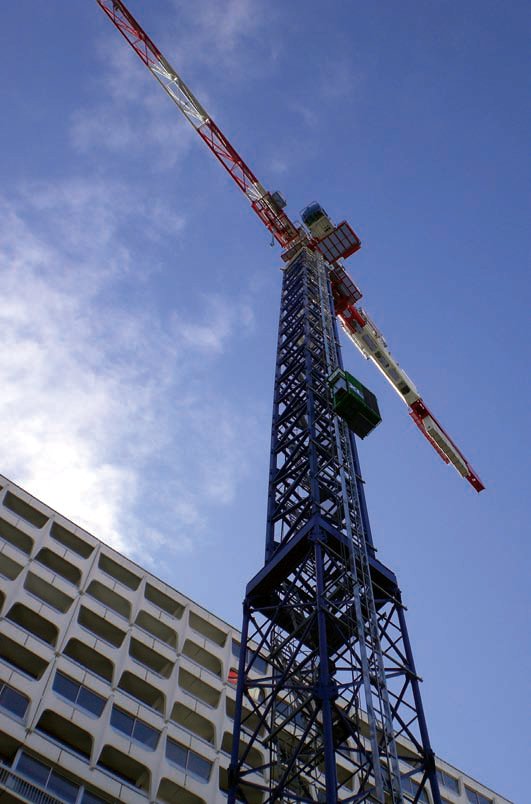 France’s XL introduced its operator lift in response to the legislation introduced in its domestic market. It is now being used at a subway project in Rennes.
France’s XL introduced its operator lift in response to the legislation introduced in its domestic market. It is now being used at a subway project in Rennes.
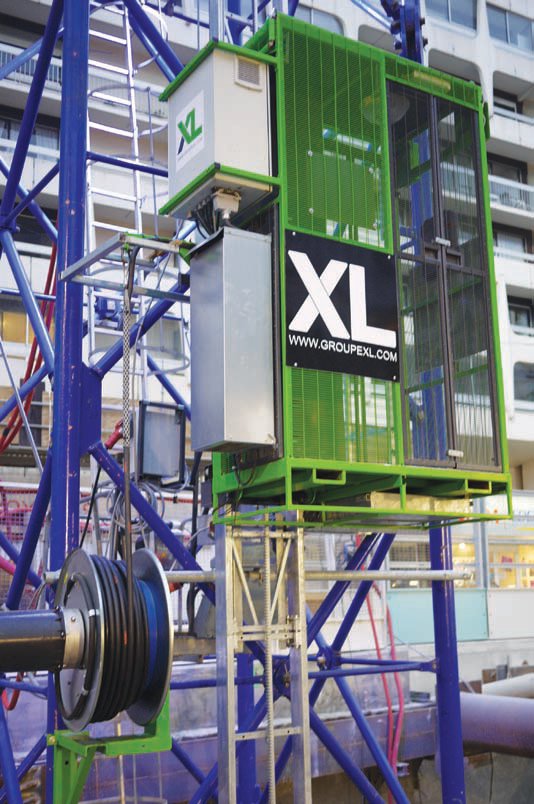 France’s XL introduced its operator lift in response to the legislation introduced in its domestic market. It is now being used at a subway project in Rennes.
France’s XL introduced its operator lift in response to the legislation introduced in its domestic market. It is now being used at a subway project in Rennes.
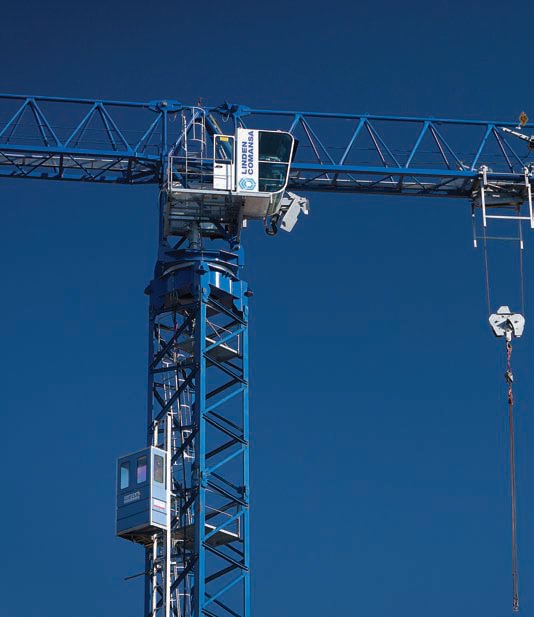 An operator lift reaches the top of a 21LC290 Linden Comansa crane, being used by Kran Elektro in Herning, Denmark.
An operator lift reaches the top of a 21LC290 Linden Comansa crane, being used by Kran Elektro in Herning, Denmark.
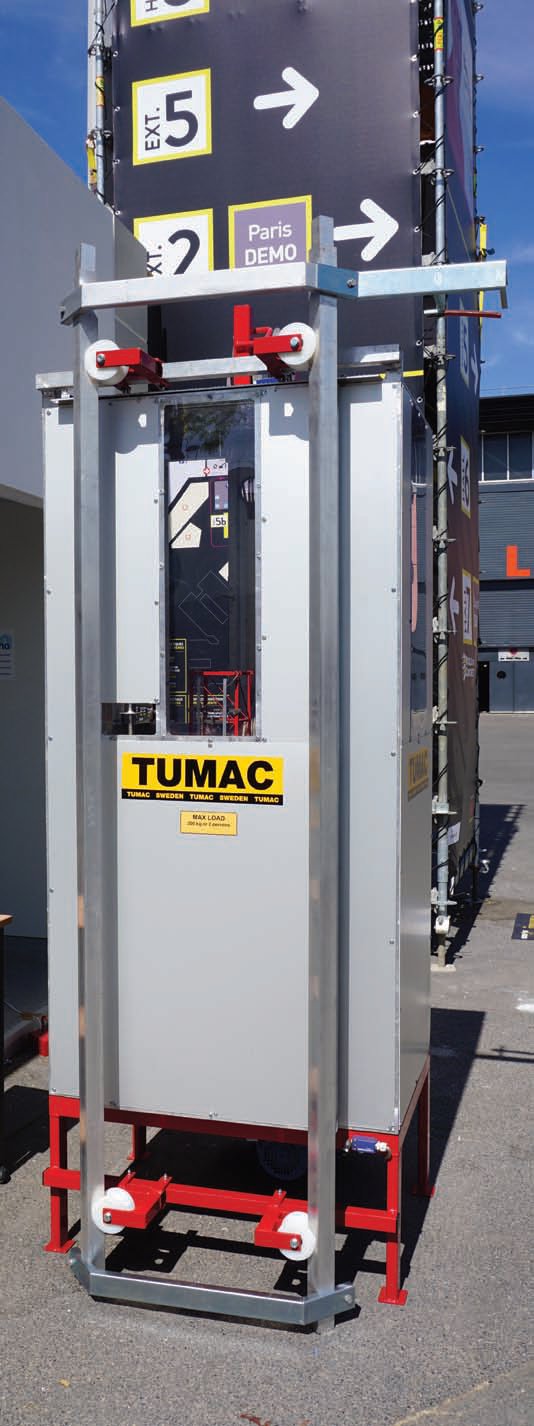 Sweden’s Tumac is an established manufacturer of operator lifts and is now looking to the France market
Sweden’s Tumac is an established manufacturer of operator lifts and is now looking to the France market
